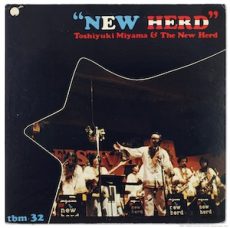
Daily Dose Of Jazz…
Toshiyuki Miyama was born on October 31, 1921 in Chiba, Japan. He played in a Japan Maritime Self-Defense Force band during World War II. After the war, he joined the Lucky Puppy Orchestra.
From 1950 he led his own ensemble, Jive Ace, however, eight years later the group expanded to big-band size and changed its name to the New Herd. The ensemble’s arranger was Kozaburo Yamaki.
New Herd recorded with Charles Mingus in 1971 and toured worldwide throughout the 1970s and 1980s. Miyama led the ensemble for more than fifty years, continuing to perform into the 2000s.
Clarinetist and bandleader Toshiyuki Miyama died on May 24, 2016 at 94 years.
More Posts: bandleader,clarinet,history,instrumental,jazz,music
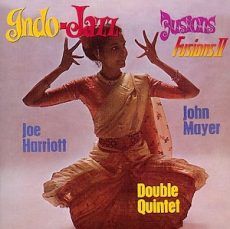
Daily Dose Of Jazz…
John Henry Basil Mayer was born on October 28, 1930 in Calcutta, Bengal, British India, to an Anglo-Indian father and Tamil mother. After studying with Phillipe Sandre in Calcutta and Melhi Mehta in Bombay, he won a scholarship to London’s Royal Academy of Music in 1952, where he studied composition with Matyas Seiber, as well as comparative music and religion in eastern and western cultures.
He worked for five years as a violinist with the London Philharmonic Orchestra beginning in 1953 and then with the Royal Philharmonic Orchestra from 1958 to 1965. During that period John was also composing fusions of Hindustani classical and Western classical forms fused with jazz undertones. His Violin Sonata was performed by Yehudi Menuhin and his Shanta Quintet was recorded by jazz sitarist Diwan Motihar and Denis Preston’s Lansdowne String Quartet in 1967.
In the 1960s he worked extensively with the Jamaican-born jazz musician Joe Harriott, with whom he formed the group Indo-Jazz Fusions. John also composed for film, and the BBC quiz show Ask the Family. From 1989 onwards he taught composition at Birmingham Conservatoire where he introduced the BMus Indian music course in 1997. He continued to compose concert works for chamber, solo and orchestral projects and record jazz-fusion albums.
Composer and sitarist John Mayer, known primarily for his fusions of jazz with Indian music, was fatally injured when hit by a motorist in North London and died on March 9, 2004.
More Posts: bandleader,composer,history,instrumental,jazz,music,sitar
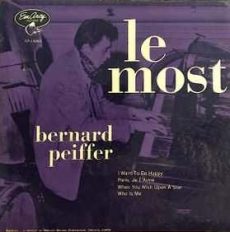
Daily Dose Of Jazz…
Bernard Peiffer was born on October 23, 1922 in Épinal, France and was raised in a musical family, with his father and uncle playing the violin and the organ, respectively. Learning piano at age nine, he studied under Pierre Maire and quickly demonstrated his abilities by repeating long sections of classical works by ear. He won the 1st Prize in Piano at the Paris Conservatory and began his professional career at the age of twenty. playing with André Ekyan and Django Reinhardt.
During World War II, he joined the French resistance after witnessing the execution of a friend by the Gestapo in the streets of Paris. Soon afterwards he was captured, and was incarcerated for over a year. By the early 1950s, he began a successful career, playing with Django Reinhardt, leading his own quintet, composing film soundtracks, and achieving notice in the clubs of Paris, Monte Carlo and Nice, and eventually became nationally known.
He moved to Philadelphia, Pennsylvania in 1954 with his wife Corine and daughter Rebecca. The subsequent loss of his third daughter profoundly affected him, resulting in Poem for a Lonely Child. During his first years in America, Bernard achieved considerable success, performing at Carnegie Hall, Birdland, and the Newport Jazz Festival. He recorded for the EmArcy, Decca and Laurie labels.
Peiffer released his last commercial album in 1965 and, after having kidney surgery a few years later, restricted himself to performing and teaching, mainly in Philadelphia. His students included Uri Caine, Sumi Tonooka, Tom Lawton, and Don Glanden. His last major appearance was at the 1974 New York/Newport Festival at Carnegie Hall. Pianist, composer and teacher Bernard Peiffer, whose nickname was Le Most for his piano skills, died on September 7, 1976. He was 53.
More Posts: bandleader,composer,educator,history,instrumental,jazz,music,piano
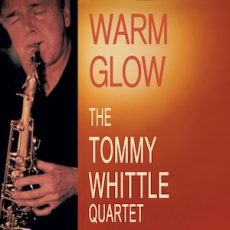
Daily Dose Of Jazz…
Tommy Whittle was born on October 13, 1926 in Grangemouth, Scotland. He started playing clarinet at the age of twelve before taking up tenor saxophone at 13, guided by Alan Davie. When he was sixteen he moved to Chatham, Kent, England and in 1943 started playing in Claude Giddins’ dance-hall band in nearby Gillingham.
The 1940s saw Whittle playing with Johnny Claes, Lew Stone, Carl Barriteau, and Harry Hayes. In the middle of the decade he joined Ted Heath’s band, playing with him until 1952 when he moved on to play in Tony Kinsey’s small group. In the 1950s he joined Cyril Stapleton’s BBC Show Band where he became a featured soloist in nationwide broadcasts.
Forming a quintet in 1954 with Harry Klein and Dill Jones, and later toured with a ten-piece band for nealy a year and a half. He went on to lead small groups and performed in clubs. In 1955 he was voted Britain’s top tenor-sax player in the New Musical Express and Melody Maker polls, topping the latter the following year.
During the 1950s his sextet performed in France and the United States, where in 1956 he also participated in an exchange visit with Gerry Mulligan. He briefly worked in the Stan Kenton Band, was hired as bandleader at the Dorchester Hotel in London, then followed a period of 12 years with the Jack Parnell ATV Orchestra, accompanying Bing Crosby, Peggy Lee, and Barbra Streisand.
He went on to run a weekly club at the Hopbine pub, worked with Laurie Johnson’s London Big Band and recorded with Benny Goodman. During the 1980s and 1990s, he was in demand as a session musician, performed with his quartet and wife Barbara Jay and became a member and then leader of the Pizza Express All Stars Jazz Band.
Saxophonist Tommy Whittle while on holiday in Spain died on his 87th birthday after contracting pneumonia on October 13, 2013.
More Posts: bandleader,history,instrumental,jazz,music,saxophone
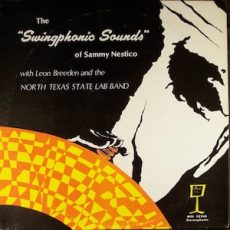
Daily Dose Of Jazz…
Harold Leon Breeden was born on October 3, 1921 in Guthrie, Oklahoma. At three his parents moved to Wichita Falls, Texas where he grew up and graduated from high school. He attended Texas Wesleyan College in Fort Worth, Texas on a scholarship and later transferred to Texas Christian University where he completed both his bachelor’s and master’s degrees. A move to New York City had him doing graduate work at Columbia University, he studied clarinet with Reginald Kell with whom Benny Goodman studied.
In 1944 after military duty he became the Director of Bands at Texas Christian University and later served as Director of Bands at Grand Prairie High School, then Director of Jazz Studies at the University of North Texas College of Music, where Breeden remained until his retirement in 1984.
Breeden also played saxophone and studied composition and arranging at Texas Christian. As a producer of the NBC Symphony, conducted by Arturo Toscanini, he declined a position as staff writer and arranger for the orchestra to take care of his ill father. Moving back to Texas he worked as music coordinator for KXAS-TV in Fort Worth, known at the time as WBAP-TV.
In the last several years of his life, Leon frequently soloed on clarinet with The Official Texas Jazz Orchestra. In 2009, The University of North Texas awarded him with an honorary Doctor of Humane Letters degree.
Clarinstist, educator, composer and director Leon Breeden, who made the One O’Clock Lab Band internationally famous, died of natural causes on August 11, 2010 in Dallas,Texas.
More Posts: bandleader,clarinet,composer,educator,history,instrumental,jazz,music


